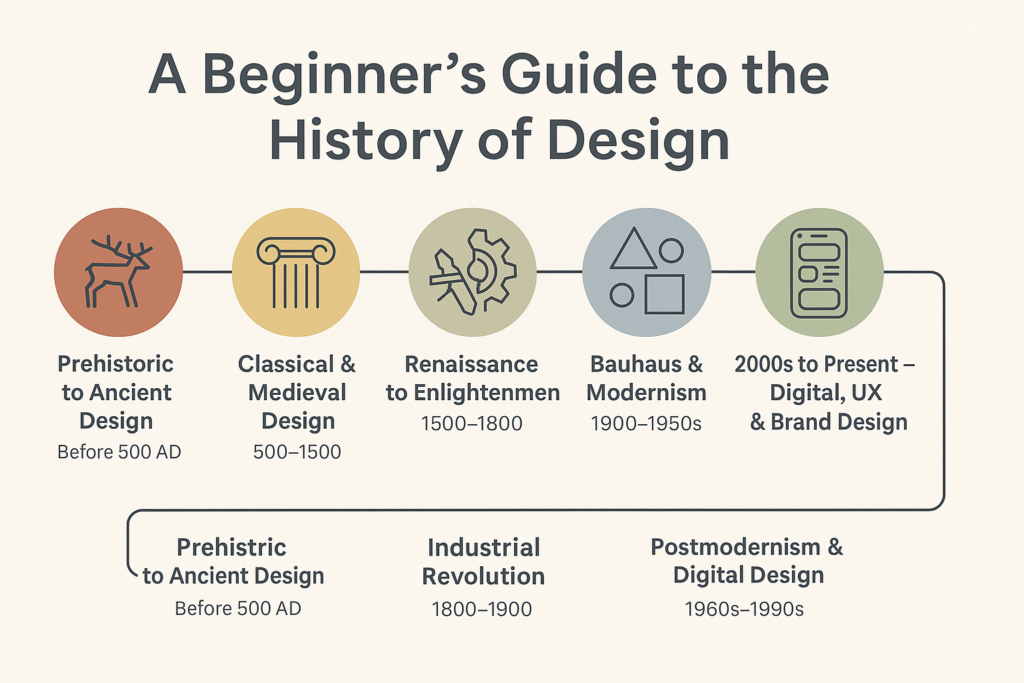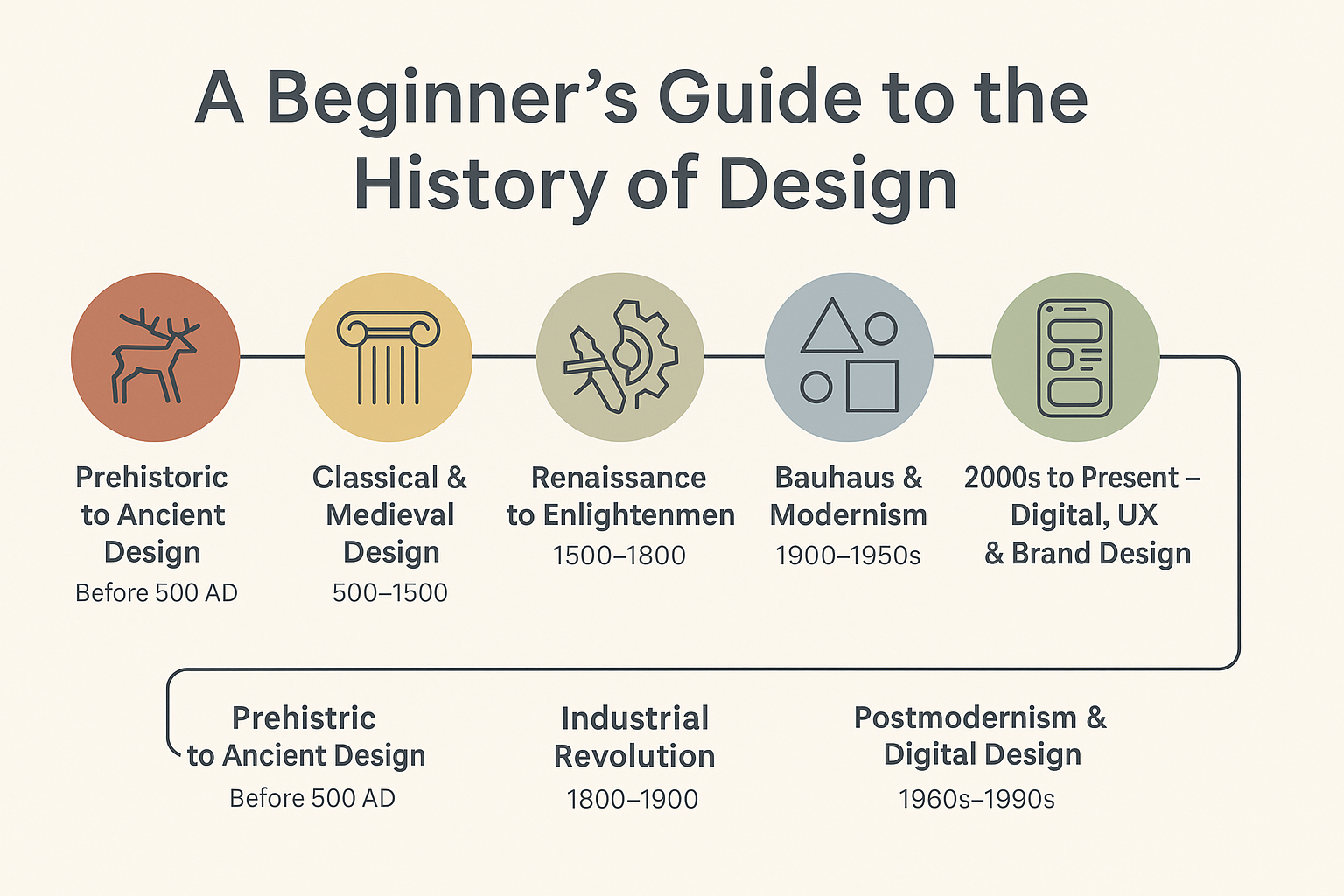Keywords: what is design history, the history of design, timeline of design, design movements, graphic design history, evolution of design

📍 Introduction:
Have you ever looked at a sleek website, a modern logo, or a minimalist poster and wondered: how did design get here?
Whether you’re a designer, marketer, or creative thinker, understanding the history of design helps you appreciate trends, break rules with purpose, and build better brands. This guide gives you a beginner-friendly walkthrough—from ancient symbols to the digital interfaces of today.
📚 What is the History of Design?
The history of design is the journey of visual communication, functionality, and aesthetics evolving across time. It covers:
- Graphic Design
- Product Design
- Industrial Design
- UX/UI Design
- Interior & Fashion Design
Every design we see today is built on centuries of experimentation, rebellion, and innovation.
🕰️ Key Eras in Design History
🏺 1. Prehistoric to Ancient Design (Before 500 AD)
Humans began using symbols and illustrations for survival and storytelling:
- Cave paintings in Lascaux
- Egyptian hieroglyphs
- Roman mosaics
🧠 Design was about utility + culture.
🏛️ 2. Classical & Medieval Design (500–1500)
- Intricate typography (e.g., illuminated manuscripts)
- Architecture (cathedrals, Roman columns)
- Islamic geometric patterns
📌 Design = craftsmanship + religion + royalty
🎨 3. Renaissance to Enlightenment (1500–1800)
- Birth of perspective in art
- Gutenberg’s printing press → typography boomed
- Da Vinci’s design notebooks = engineering + art
✏️ Design starts merging creativity with science.
💡 4. Industrial Revolution (1800–1900)
- Mass production changed everything
- Posters, packaging, and product labeling emerged
- William Morris sparked the Arts & Crafts Movement (anti-industrial)
📦 Function over form—or rebellion against it.
🧱 5. Bauhaus & Modernism (1900–1950s)
“Form follows function.” – Louis Sullivan
- The Bauhaus School (Germany) shaped minimalism
- Sans-serif fonts gained popularity
- Grid systems + white space became standard
🧠 Foundation of today’s UX and branding rules
📺 6. Postmodernism & Digital Design (1960s–1990s)
- Bright colors, rebellion, mixed media
- Graphic design became playful (think MTV logos)
- Apple launches Macintosh = desktop publishing revolution
🎨 Design got fun, weird, and experimental.
💻 7. 2000s to Present – Digital, UX & Brand Design
- Responsive design for mobile
- Flat & material design (Google, Apple)
- UI/UX dominates digital presence
- Branding focuses on storytelling + minimalism
📱 Design is about experience, not just visuals.
🎯 Why Designers Should Study Design History
- Learn from the past to break rules with purpose
- Understand styles to mix, contrast, and evolve
- Avoid trends that fade and build brands that last
- Inspire creativity through cultural context
🔎 Bonus: Iconic Design Movements You Should Know
- Bauhaus
- Swiss Design (International Typographic Style)
- Brutalism
- Minimalism
- Vaporwave (new-age postmodernism)
📬 Final Thoughts
Design isn’t just visuals—it’s philosophy, culture, rebellion, and reinvention.
Whether you’re a creator or client, knowing where design came from helps you shape where it’s going.
👉 Want your brand to stand on a strong design foundation? Let’s Talk Design



